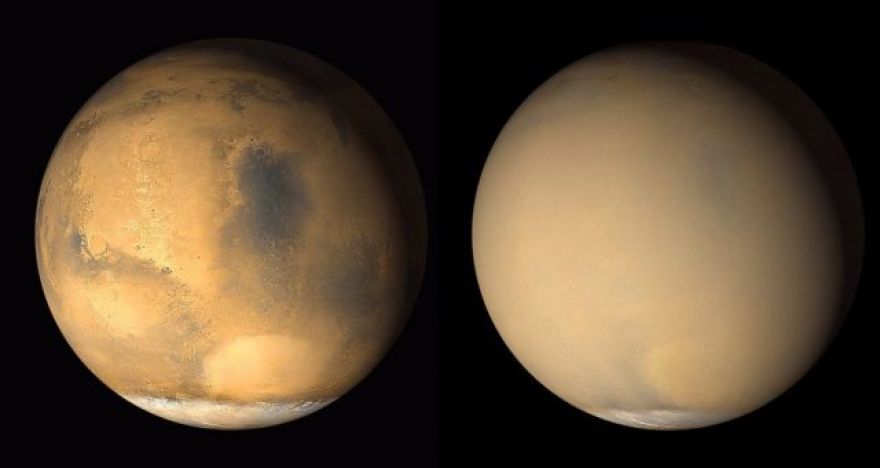
This week in space: Enceladus entices, SpaceX succeeds, and Mars is a bad vacation spot right now
Welcome to This Week In Space, where we’ll be discussing Enceladus’ stretch marks, new developments around NASA’s Orion crew capsule, the end of an era for SpaceX, and some planetary science to boot.
Enceladus’ interior continues to fascinate Saturnian scientists
mission to Saturn is in its last months, but the probe continues to beam back startling findings that have transformed our understanding of the Saturnian system. We knew that subsurface liquid ocean, which was only , periodically vents into space through four fissures in the planet’s crust nicknamed “tiger stripes.”
Geyers erupting from Enceladus
Now Cassini’s in-depth investigation has revealed that the first few meters of subsurface material near the stripes is substantially warmer than you might expect.
Currently, our best candidate for how Enceladus has retained its vast Stygian ocean is through tidal stresses between itself, Saturn, and (in a rather distant third place) other moons within the system.
President Trump calls for massive cuts to NASA’s Earth Science division
President Trump’s new budget slices a goodly chunk from NASA funding, including anything related to climate change or atmospheric carbon dioxide monitoring.
DSCOVR, the jointly NASA- and NOAA-operated climate satellite, was launched by a SpaceX rocket in 2015. That program has been completely defunded, which leaves me thankful that orbits at a Lagrange point, because clearly these people wouldn’t care if a satellite fell out of the sky onto the White House lawn as long as they got to spend one more day pretending anthropogenic climate change doesn’t exist.
Orion’s parachute pants deployed, and Lockheed wants a Mars mission
NASA conducted a successful parachute test of their ORION crew capsule. It involved all three main chutes, which are together capable of slowing the capsule from more than 300 mph to a rather more sedate 20 mph. Twenty miles per hour is a lot better for a splashdown, no?
Lockheed-Martin has big plans for its Orion capsule, including a proposal to use two of them, anchored end-to-end and with various other science and habitation modules as a Mars exploration platform. While the capsules would never actually make planetfall, the three-year mission could be ready as soon as 2028 and could give us invaluable data on future sites for a base camp on the Red Planet. All of this assumes, of course, that the SLS Block II is ready to fly by then.
SpaceX successfully launches its last single-shot rocket
In other rocket news, SpaceX managed to launch their rocket, after a two-day delay because of high winds. This launch was significant because it represents . The Echostar 23 satellite had a tight launch window, and the need to boost it into geosynchronous orbit as opposed to low earth orbit meant there wasn’t enough fuel left in the booster for a controlled descent on to an ocean barge.
SpaceX’s last single-shot booster takes flight.
Think about that for a moment. Ten years ago, if you’d said that a company or government agency had managed to land a rocket on a barge without one of them exploding, people would’ve called you a dreamer. Today, we’re on our way to a future where it’ll be unusual when can’t reuse a rocket.
ExoMars prepares to science the @#$ out of Mars
The ExoMars Trace Gas Orbiter has finished up its last set of science readings before it starts a year of aerobraking to enter a new orbit. ExoMars is currently in a one-day orbit, but it’s about to spend a year moving its closest approach point in toward Mars in much the same fashion that Juno was supposed to. (Juno had engine trouble, so its team decided it should for now.) When it’s settled into its new orbit, the spacecraft will be doing science from a “near-circular 400 km-altitude orbit that circles Mars once every two hours.”
ExoMars has been spending its time around the Red Planet looking at atmospheric chemistry and the flow of neutrons from the planet’s surface. Its optical-band CASSIS instrument has been calibrating itself on the stars, performing research “” in advance of its primary mission, which begins next year.
Massive Mars dust-storm make Earth’s March blizzard look like a chump
Finally, the Mars Reconnaissance Orbiter has observed the to blanket Mars in as many weeks. The current storm is larger than the United States, and swept across the planet’s southern hemisphere just last week. Did you know that global dust storms occur on Mars? Now you do, and you can see one in action in our feature image above.